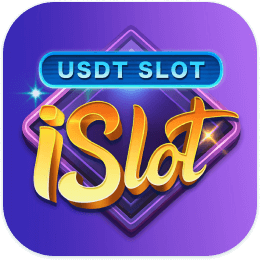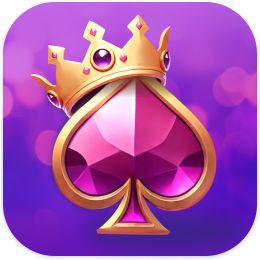Digital platform Definition from TechTarget

Learn the meaning of digital platforms. Discover how they work, how to create one and the different types of digital platforms.
A digital platform is a web-based structural software package that speeds and eases transactions among users. Digital platforms serve digital markets, while also offering physical products. They are common to businesses of all sizes – from startups to large enterprises – in fulfilling a variety of business functions, primarily customer interactions.
There are several kinds of digital platforms, but all facilitate services, interactions and transactions between users. Interactions may occur between two or more individuals, or between the user and platform provider.
Among the many benefits a digital platform affords businesses, some of the most high-profile are:
- Improved customer experience. Customer service-related digital platforms can better the relationship between buyer and seller in a number of ways throughout the process, including freely offering pertinent information prior to the sale, streamlining the purchasing process, and providing support after the transaction.
- Expanded customer reach. An online presence provides a wider potential range of customers than a storefront. Digital platforms are the best way for businesses to connect with a broader audience and create new opportunities for innovation and growth.
- Improved data insights. Digital platforms often include business analytics and data collection to help businesses gain insight into customer behaviors and trends. This information, when gleaned by shrewd professionals, strengthens decision-making and drives growth.
- Costs fall and efficiency rises. Digital platforms, properly established and maintained, help businesses reduce operating costs, perhaps through operational efficiency or consolidation of multiple platforms for services. In addition, digital platforms allow businesses to automate certain tasks and streamline business processes, improving time and cost savings.
- Increased flexibility. A good digital platform is flexible and adaptable to changing business needs and trends, allowing a business to remain competitive.
Digital platforms cater to various needs of their visitors. Among the best-known platforms are:
- E-commerce: Amazon, Etsy and eBay
- Content creation: YouTube and Spotify
- Business collaboration: Slack, Zoom and Microsoft Teams
- Knowledge: Quora and StackOverflow
- Learning: Coursera, Udemy and edX
- Social media: Facebook,Twitter and Instagram
- Gaming platforms: Steam, PlayStation Network and Xbox Live
- Financial platforms: PayPal, Venmo and Stripe
- Transportation and travel platforms: Uber, Lyft and Airbnb
- Healthcare platforms: MeMD, PatientsLikeMe, Zocdoc and GoodRx
Digital platforms come in various forms and serve different purposes. A digital platform is a comprehensive combination of hardware and software, making it more complex than a web server, which provides information from a database. Digital platforms perform many functions, web serving being one of them.
The key components of a digital platform vary depending on the purpose and use of the platform. However, there are some common elements across platforms, including the following:
This article is part of
What is digital transformation? Everything you need to know
- Which also includes:
- 7 examples of digital transformation success in business
- 11 reasons why digital transformations fail, explained by pros
- 9 tips to measure and improve digital transformation ROI
Download1Download this entire guide for FREE now!
Which also includes:
7 examples of digital transformation success in business
11 reasons why digital transformations fail, explained by pros
9 tips to measure and improve digital transformation ROI
Infrastructure. Beginning with the basic building blocks, every platform requires both hardware and software. This includes servers, storage, networking, operating systems, databases, application programming interfaces (APIs) and middleware.
Front end. This external part of the platform allows users to interact with the platform. It includes web pages, PC and mobile apps and any other interface for user interaction.
Back end. This includes the database, storage, business logic, APIs and other back-end services.
User authentication. For user verification and access control, most digital platforms include a single-factor means of authentication, such as a login with a password, but some use two-factor authentication, such as texting an access code to the user’s smartphone.
User management. This part of the system handles user registration, login, logout and profile management.
APIs. Many platforms have an API that allows third parties to access the system, giving users access to more than just a browser or the provider’s application.
Analytics and monitoring. These include logging user activity for both analytics and security, along with monitoring for suspicious activity.
Scalability and load balancing. Because digital platforms are sometimes inundated with traffic, spreading traffic among different servers and data centers is vital to maintaining optimal performance.
Content storage and management. Digital platforms serve content to users, and those texts, images, videos and more require management and maintenance.
Payment and billing. Since many digital platforms allow and encourage transactions, secure payment processing, including billing and shipping, is needed on the platform.
While there are some digital platforms available for purchase as package software or as free and open-source software, the vast majority of digital platforms are homegrown and developed specifically by the platform provider.
Following are some tips for building a digital platform:
- Start small. Clearly define the platform’s core functionality. Focus on getting the basics working instead of trying to do everything at once. Amazon, YouTube and Twitter did not become the comprehensive platforms they are today without years of focused, flexible effort to get there.
- Perform comprehensive market research. Communicate with a target audience to learn their wants, needs, preferences and dislikes. This process is ongoing, with developers using constant feedback to effect changes and improvements.
- Pick the right technology stack. Not all hardware and software perform equally. Some servers, for example, scale up for high performance, while others scale out to allow for massive multi-user functions. Some process transactions better than others. Be sure to properly pair hardware and software to your needs.
- Build the front end and back end at the same time. Highly interactive and transactional platforms require constant attention to both the user interface and back-end processing technologies simultaneously. Transactional information from the back end, for example, can inform front-end decisions on user interface.
- Test and document. Because a digital platform is so complex, the DevOps method, emphasizing regular updates and deployment, is a strong choice for platform development. The process, along with its successes and challenges, is documented throughout, so whether a business experiences turnover or, conversely, expands its development team, the code and processes remain available to employees.
- Keep going. Creating a digital platform is an ongoing process that requires continuous improvement and adaptation to changing user needs and technology advancements. Collaboration among cross-functional teams, including developers, designers, product managers and marketers, is essential for success. Additionally, feedback from users plays a crucial role in refining and evolving the platform over time.
Digital platforms should not be confused with digital products. A digital platform is a medium that facilitates the exchange of something of value between two or more parties, while digital products are goods or services that are exchanged.
There is a relationship between the two; users visit a digital platform, such as iTunes or Spotify, to purchase or download a digital product, such as a video or music.
Top 8 digital asset management platforms to consider
Policymaker proposes commission to oversee digital platforms
Digital platforms redefining talent acquisition, workforce
4 key ways partners sharpen digital transformation strategy
Digital Advertising Act aims to break up big tech ad platforms
What is a startup accelerator?A startup accelerator, sometimes referred to as a seed accelerator, is a business program that supports early-stage, … See complete definitionWhat is an entrepreneur (entrepreneurship)?An entrepreneur is an individual who identifies a need in the marketplace and works to fulfill it. See complete definitionWhat is strategic innovation?Strategic innovation is an organization’s process of reinventing or redesigning its corporate strategy to drive business growth, … See complete definition- Top 9 blockchain platforms to consider in 2024 By: George Lawton
By: George Lawton
- blockchain
 By: Nick Barney
By: Nick Barney - What is a smart contract?
 By: Nick Barney
By: Nick Barney - platform economy
 By: Laura Fitzgibbons
By: Laura Fitzgibbons
 By: George Lawton
By: George Lawton By: Nick Barney
By: Nick Barney By: Nick Barney
By: Nick Barney By: Laura Fitzgibbons
By: Laura Fitzgibbons
FAQ
How do I download WPT Global?
Visit the WPT Global website using our link using your mobile device, and you will be redirected to download the Android client.
What is the most profitable roulette strategy?
Martingale is definitely one of the most widely known and most successful roulette strategies (for some it is the best roulette strategy), and it is very simple to apply. It can be used only for outside bets, those that provide almost 50% chance of winning, and excluding the 0.
Is Buckshot Roulette luck based?
Even though Buckshot Roulette is fundamentally based on luck, a correct choice of items can significantly improve the player’s chances of victory. This is especially relevant to the items that were added by the Double Or Nothing mode in the Steam release.Apr 7, 2024
What is the meaning of Buckshots?
noun. buck·shot. -ˌshät. plural buckshot or buckshots. : a large shotgun pellet.
バックショットルーレットのクリア時間は?
白熱のゲームプレイ ゲーム所要時間は15分から20分。 アリーナに入り、ディーラーと3ラウンド戦い、賞金を手にして退出しよう… ただし、負けたら出
Buckshot Roulette free online platform, Give you more than free download, what is buckshot roulette and how to play.
This site only collects related articles. Viewing the original, please copy and open the following link:Digital platform Definition from TechTarget











































































































































































